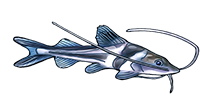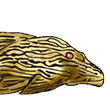If you had some decent amount of money to spend on scientific research that relates to Planet Catfish, what would you spend it on?
Here's a few of my favourite subjects:
Ancistrus review.
Panaque review.
--
Mats
Semi-serious fantasy research funding...
- MatsP
- Posts: 21038
- Joined: 06 Oct 2004, 13:58
- My articles: 4
- My images: 28
- My cats species list: 117 (i:33, k:0)
- My aquaria list: 10 (i:8)
- My BLogs: 4 (i:0, p:164)
- Spotted: 187
- Location 1: North of Cambridge
- Location 2: England.
- racoll
- Posts: 5258
- Joined: 26 Jan 2004, 12:18
- My articles: 6
- My images: 181
- My catfish: 2
- My cats species list: 2 (i:2, k:0)
- My aquaria list: 1 (i:0)
- Spotted: 238
- Location 1: London
- Location 2: UK
- panaque
- Posts: 431
- Joined: 28 Oct 2004, 11:50
- My images: 9
- My cats species list: 11 (i:0, k:0)
- My BLogs: 3 (i:0, p:9)
- Spotted: 5
- Location 1: Cornwall, United Kingdom
- Location 2: Cornwall, United Kingdom
DNA barcoding of all Loricariidae would be my priority.
This would give an objective measure of whether different L-numbers represent different species (or at least how genetically differentiated they are). It would also make it possible to trace the origin of every unknown L-number that shows up in the trade (if you're willing to take a tissue sample and sequence it) which would be nice for hobbyists but could also be used to police the import of protected populations, such as there are or will be in the future. You could then have lots more fun looking at things like the spread of different groups over the course of evolution (phylogeography) etc. etc. Calichtyidae would be next.
I work in a university and if I knew I could get the necessary specimens together I would actually apply for the funding. Meanwhile, I carry on working on insects...<sigh>
This would give an objective measure of whether different L-numbers represent different species (or at least how genetically differentiated they are). It would also make it possible to trace the origin of every unknown L-number that shows up in the trade (if you're willing to take a tissue sample and sequence it) which would be nice for hobbyists but could also be used to police the import of protected populations, such as there are or will be in the future. You could then have lots more fun looking at things like the spread of different groups over the course of evolution (phylogeography) etc. etc. Calichtyidae would be next.
I work in a university and if I knew I could get the necessary specimens together I would actually apply for the funding. Meanwhile, I carry on working on insects...<sigh>
- Jools
- Expert
- Posts: 16284
- Joined: 30 Dec 2002, 15:25
- My articles: 198
- My images: 942
- My catfish: 237
- My cats species list: 88 (i:235, k:2)
- My BLogs: 7 (i:10, p:167)
- My Wishlist: 23
- Spotted: 452
- Location 1: Middle Earth,
- Location 2: Scotland
- Interests: All things aquatic, Sci-Fi, photography and travel. Oh, and beer.
- Contact:
I'd fund a technical refresh of the site (and integrate the ACSI site into it). So, in other words, pay me to do what fall asleep thinking about...  Wishful thinking indeed!
Wishful thinking indeed!
Jools
Jools
Owner, AquaticRepublic.com, PlanetCatfish.com & ZebraPleco.com. Please consider donating towards this site's running costs.




